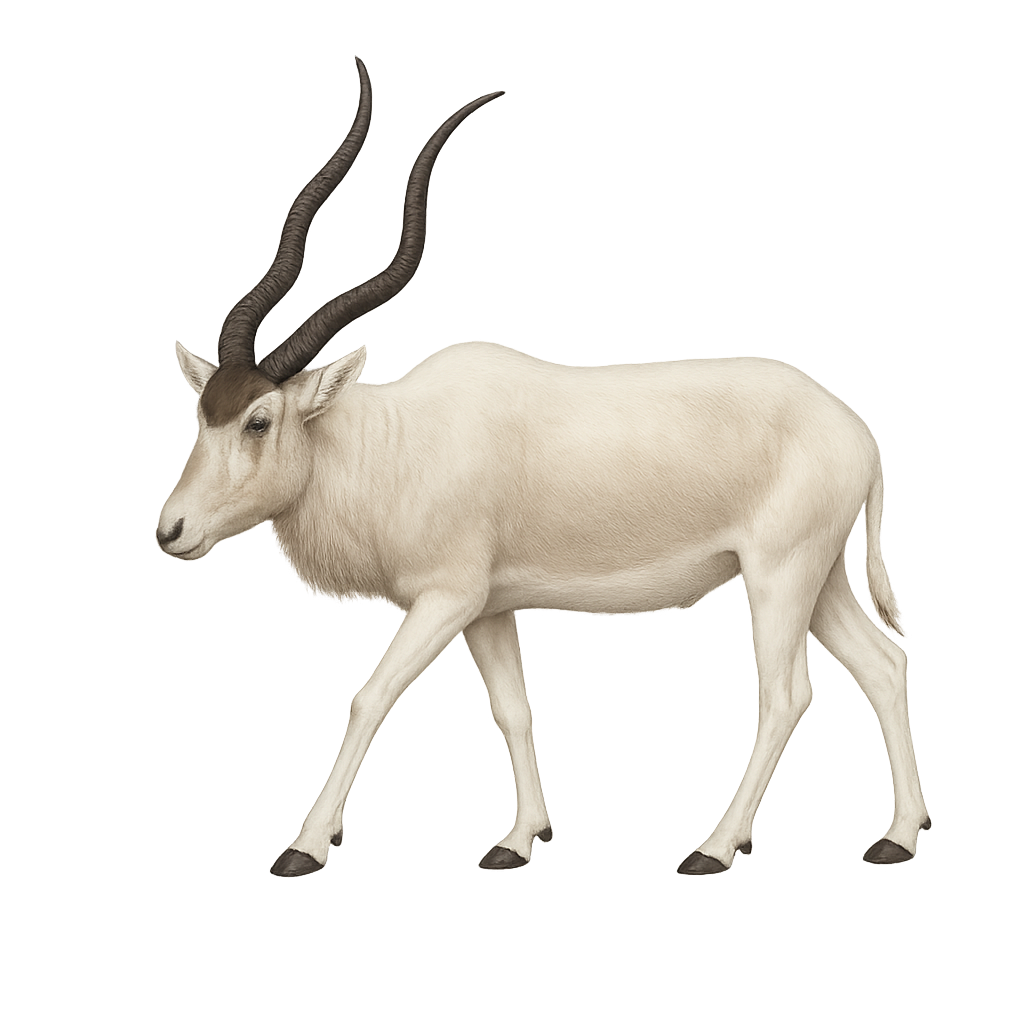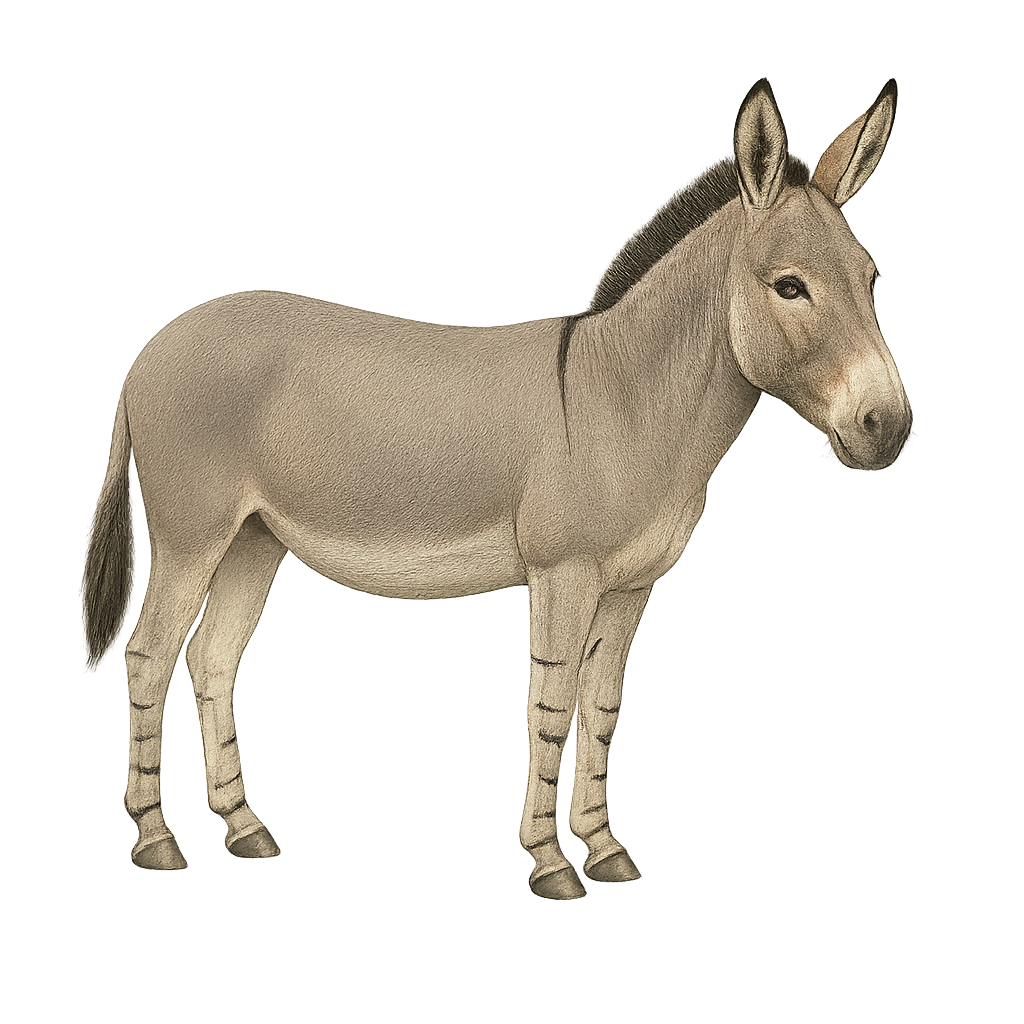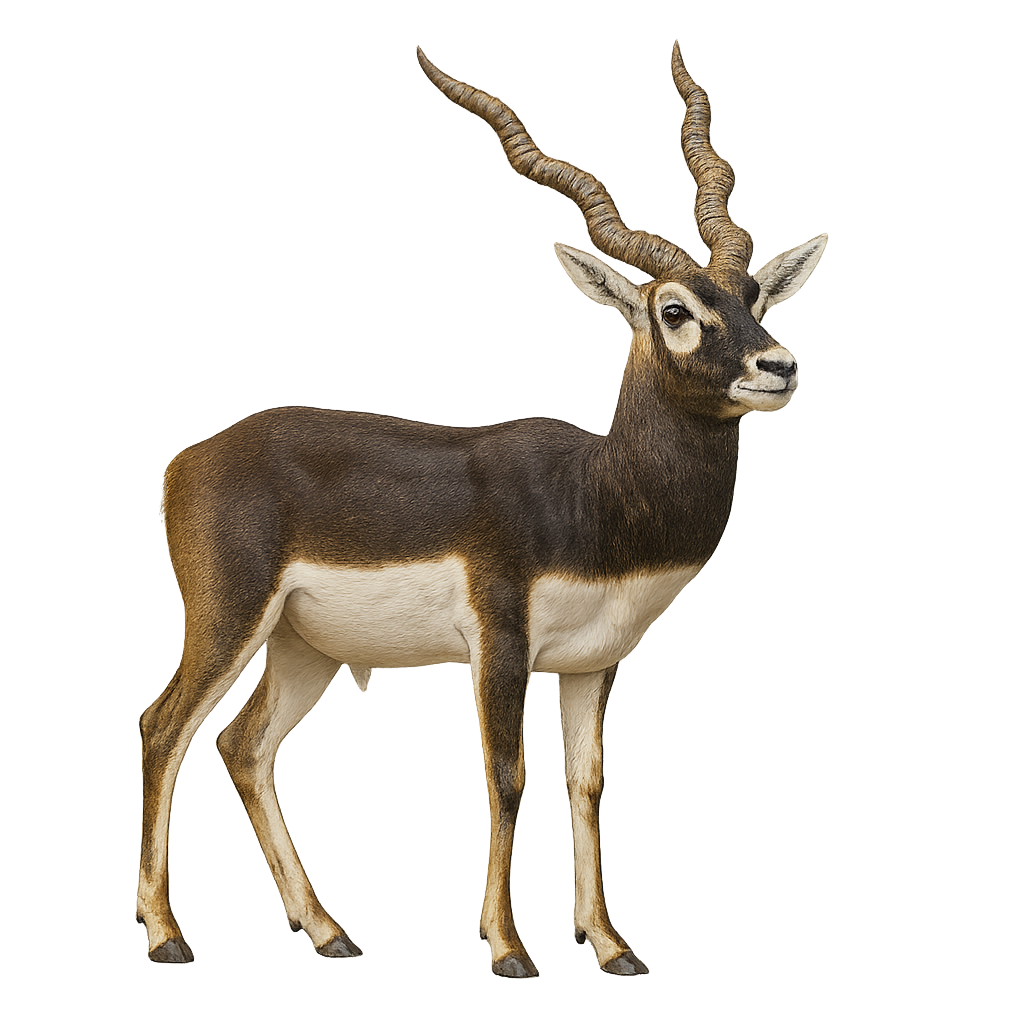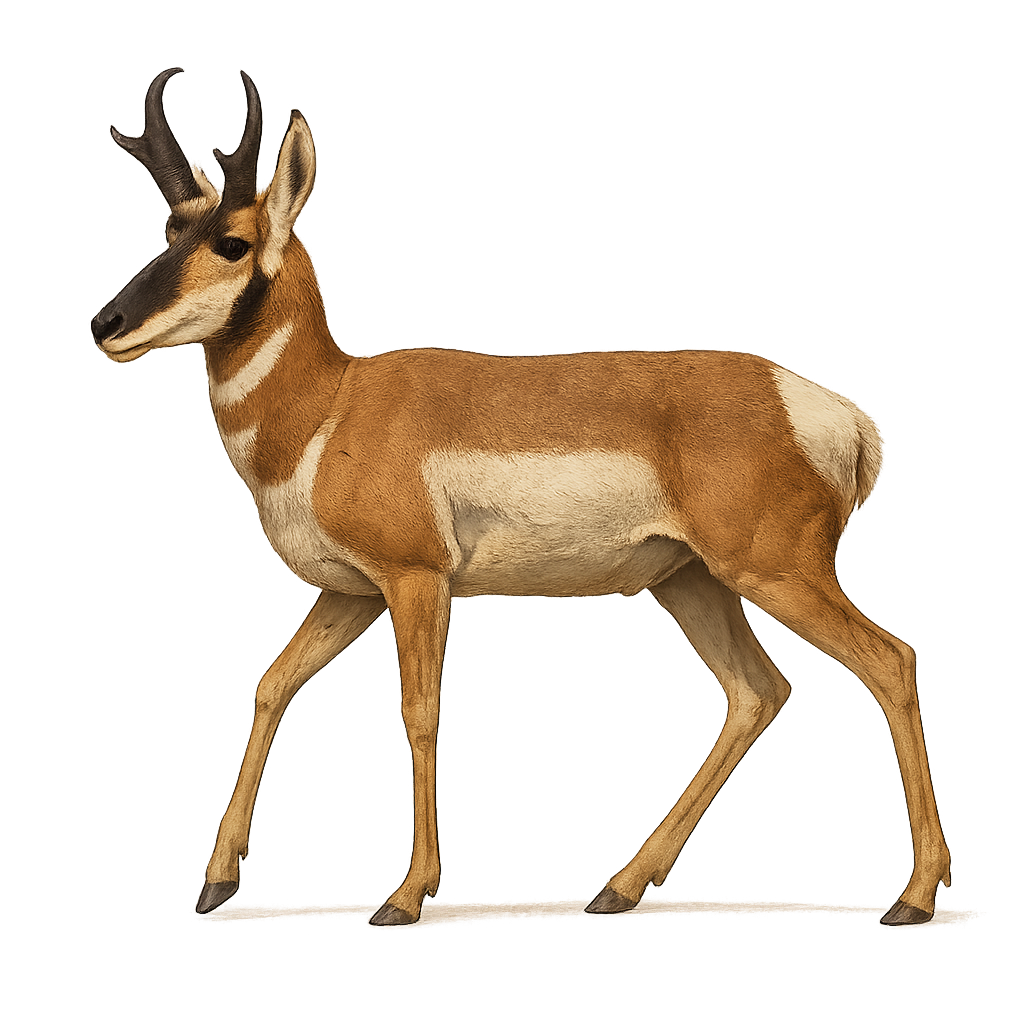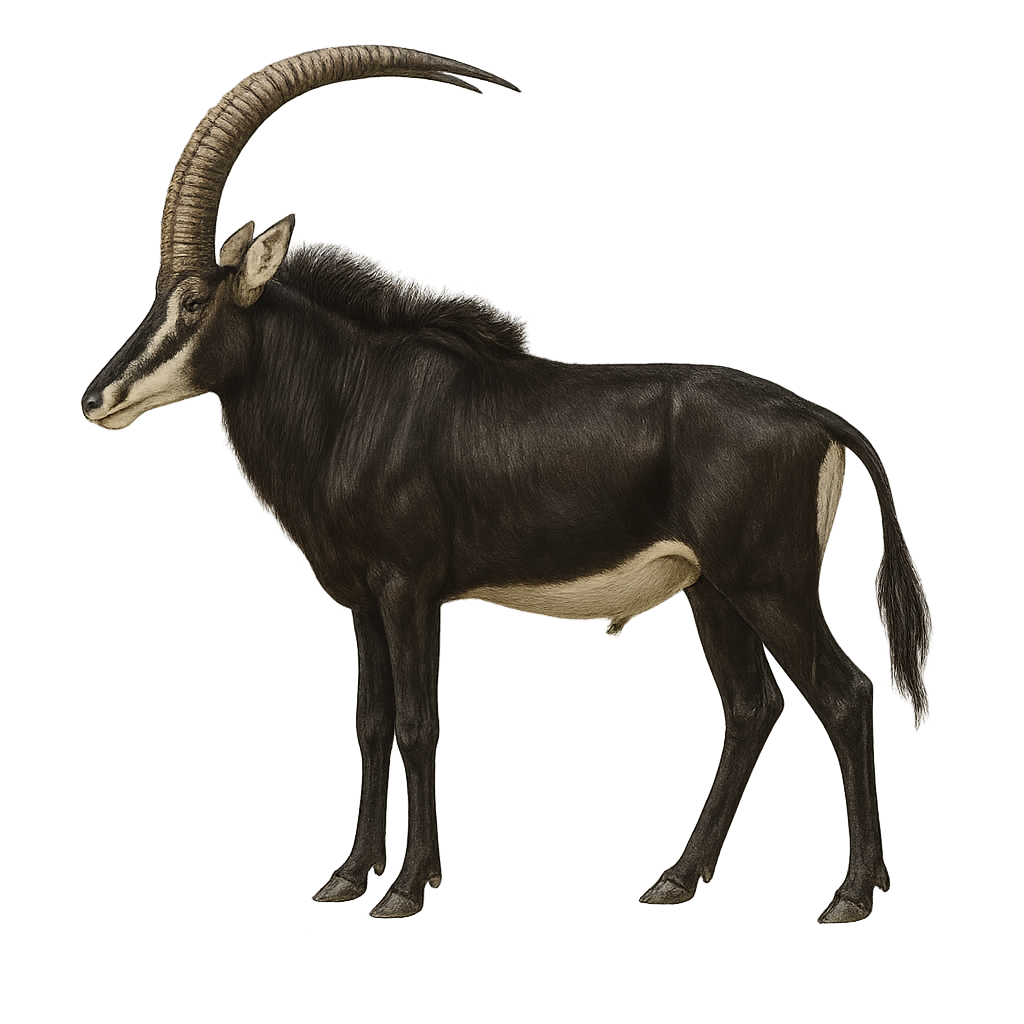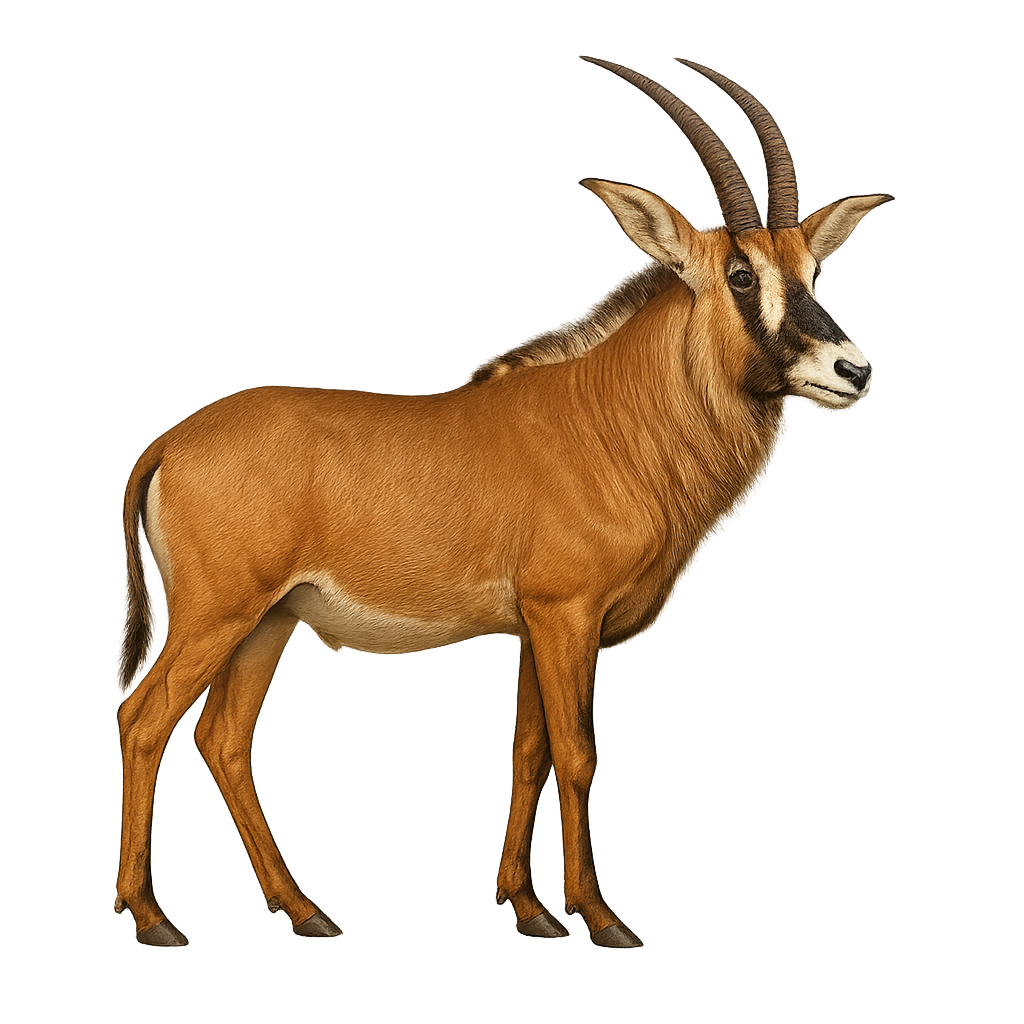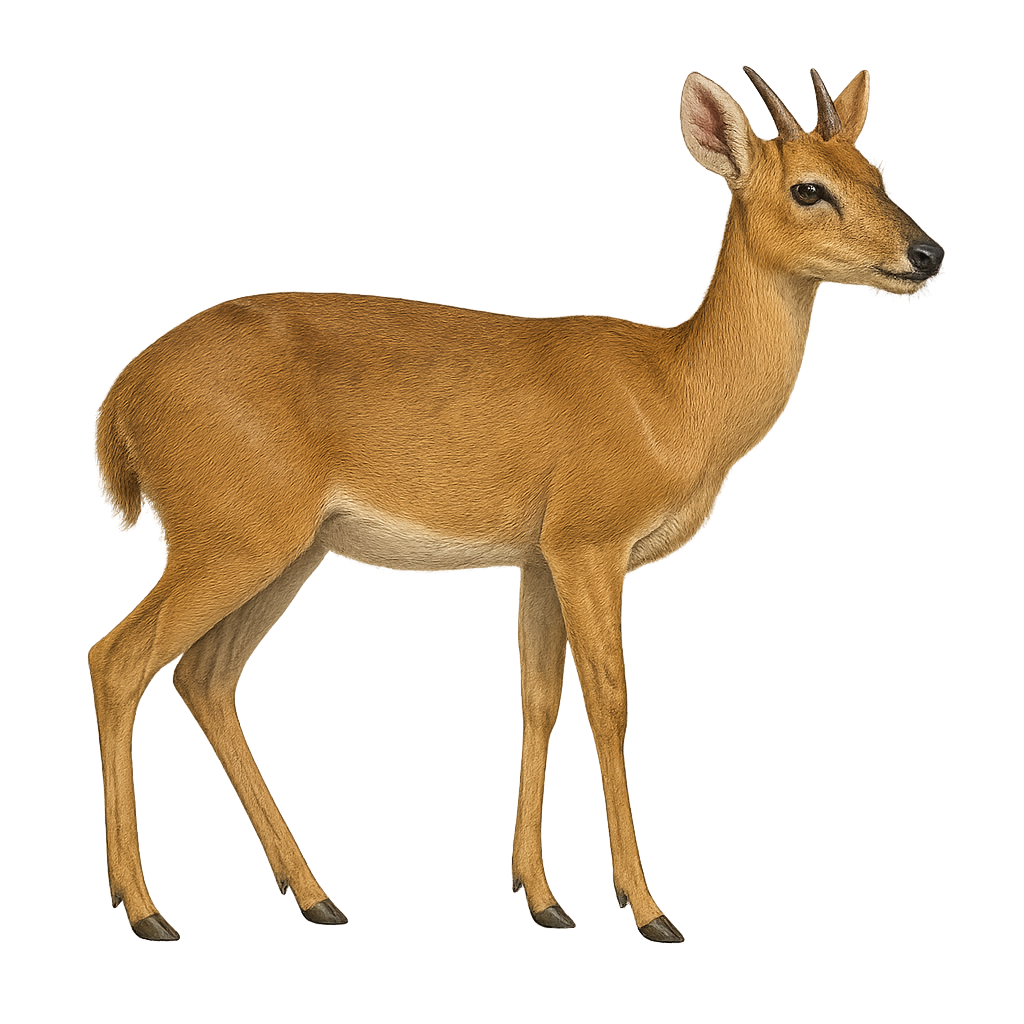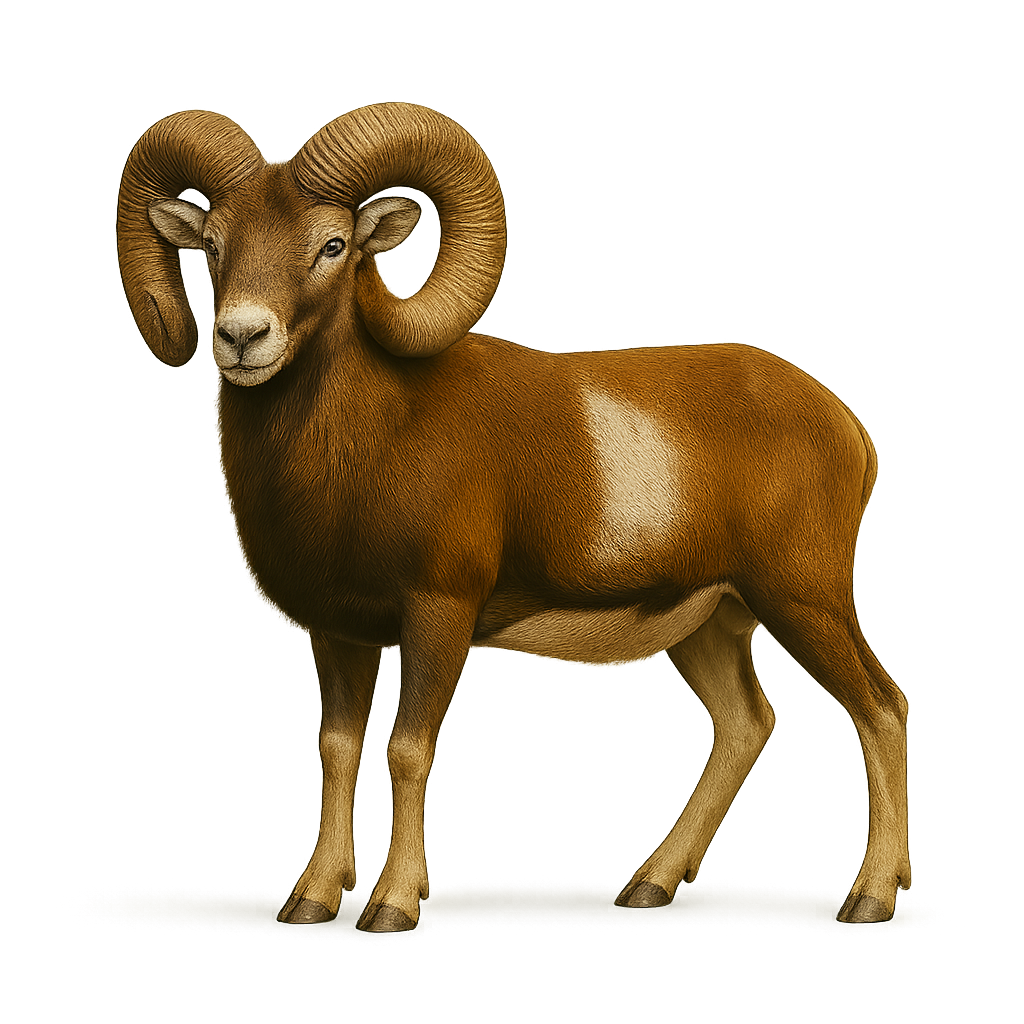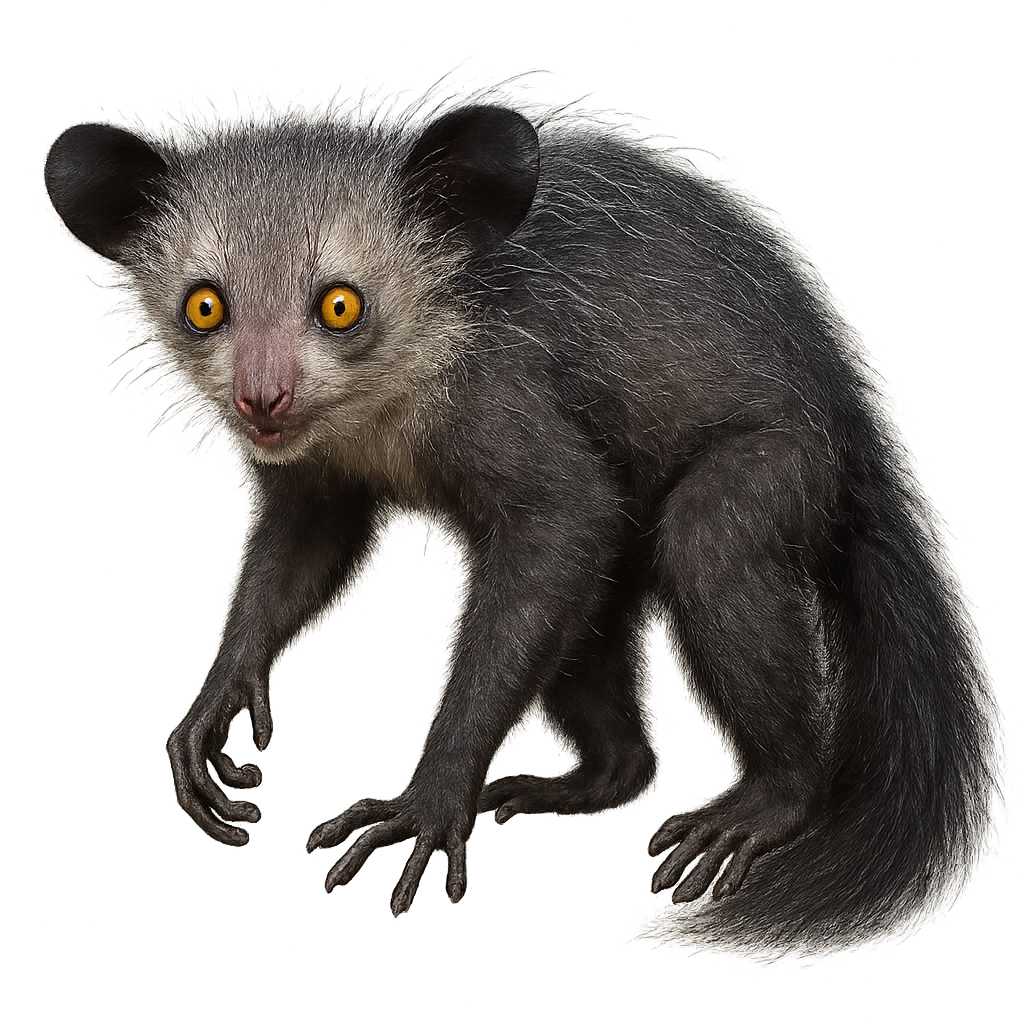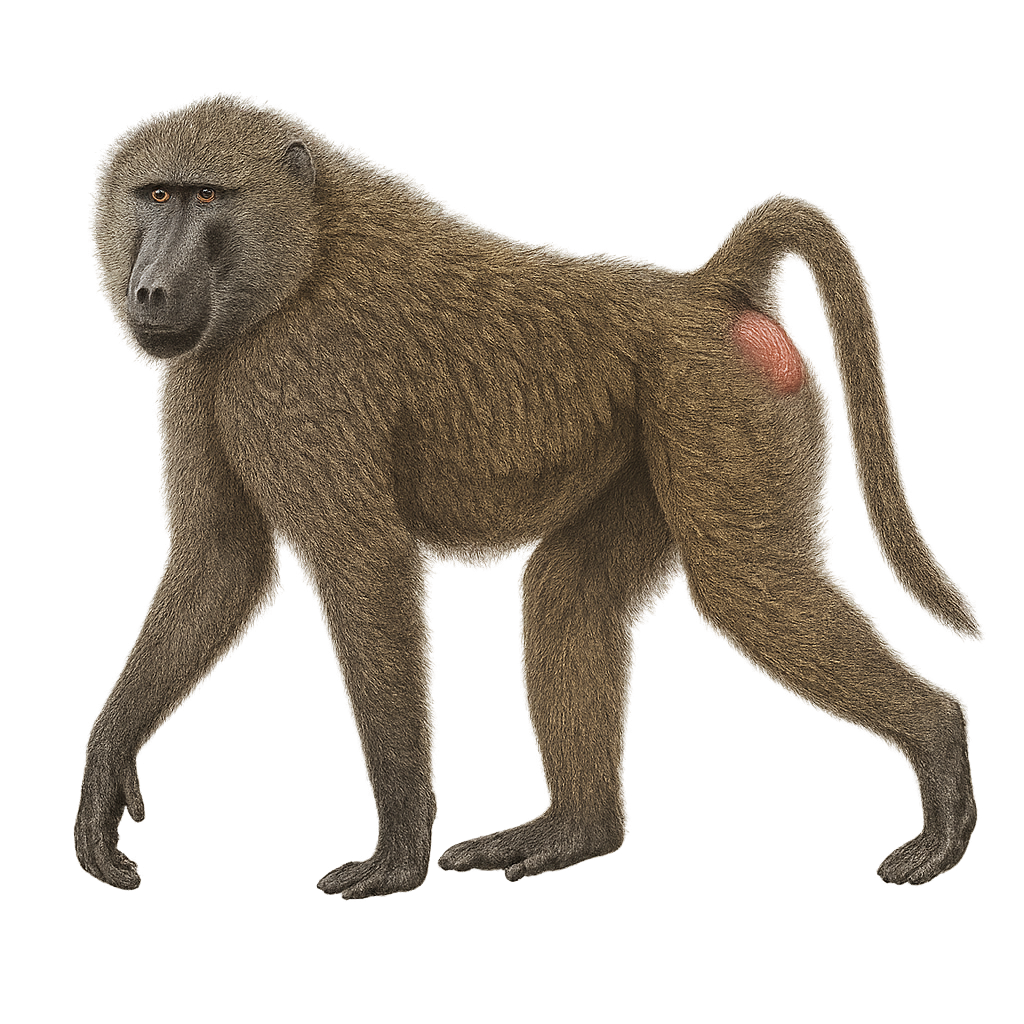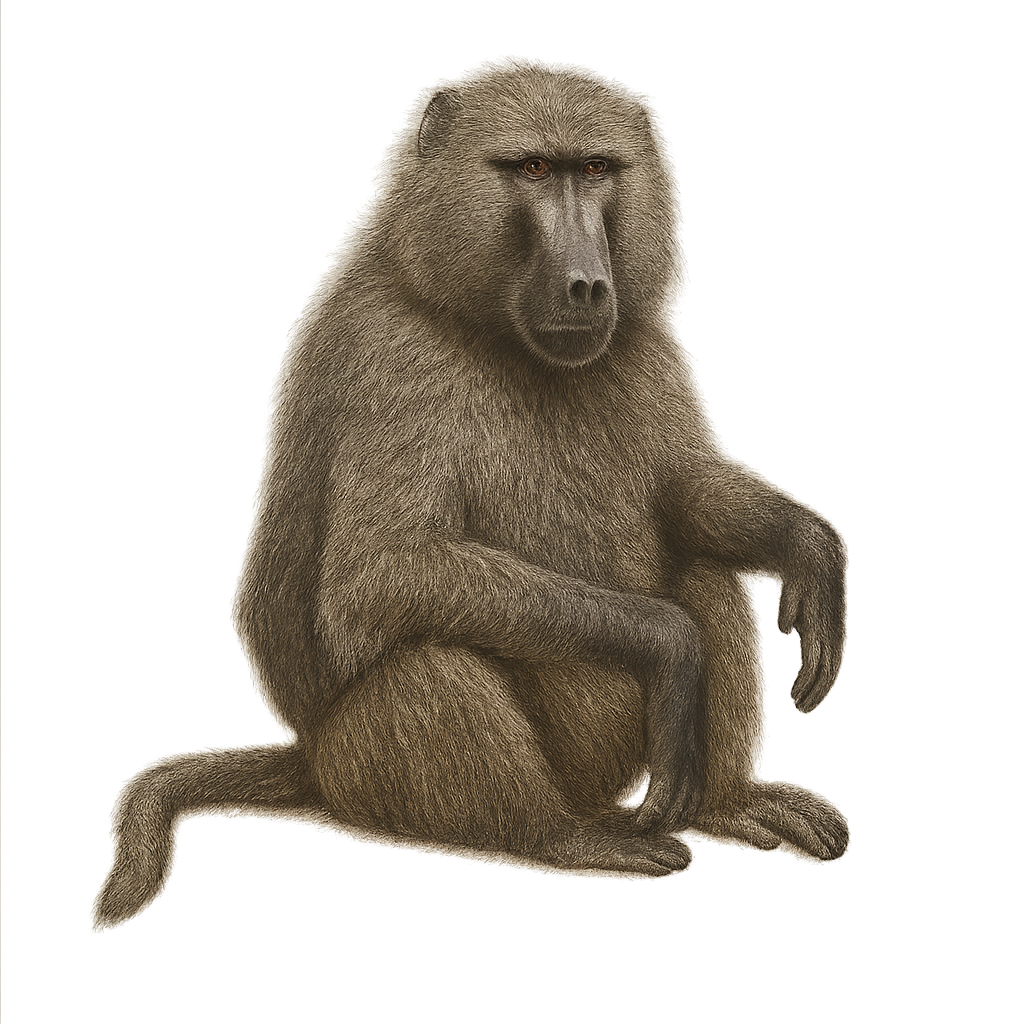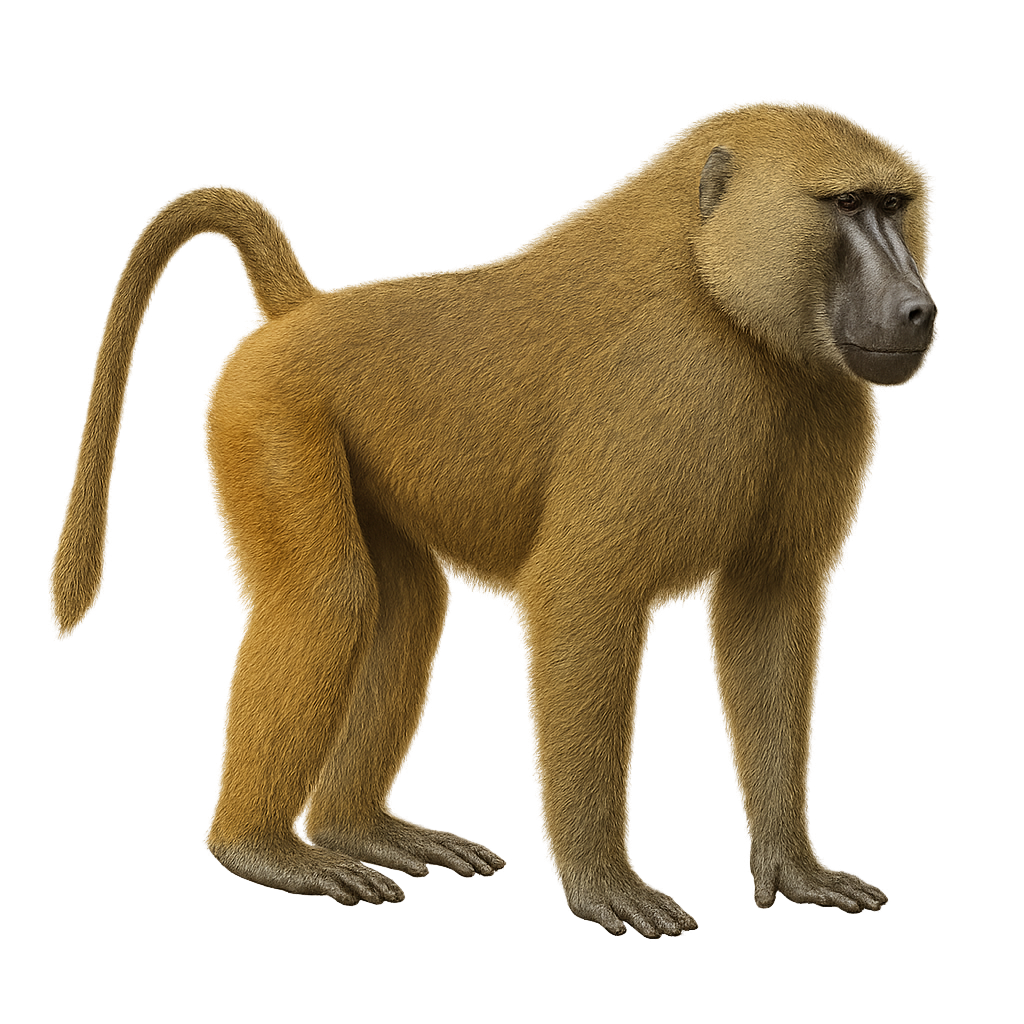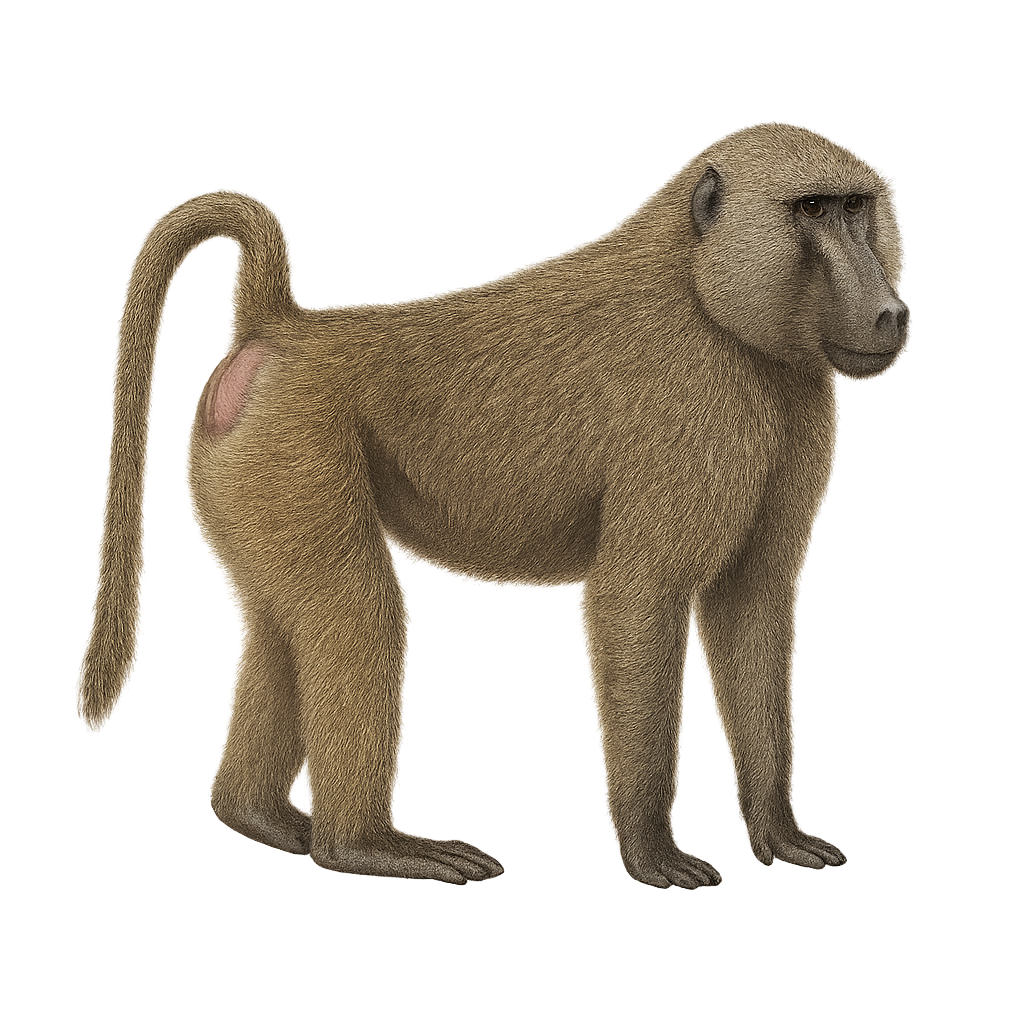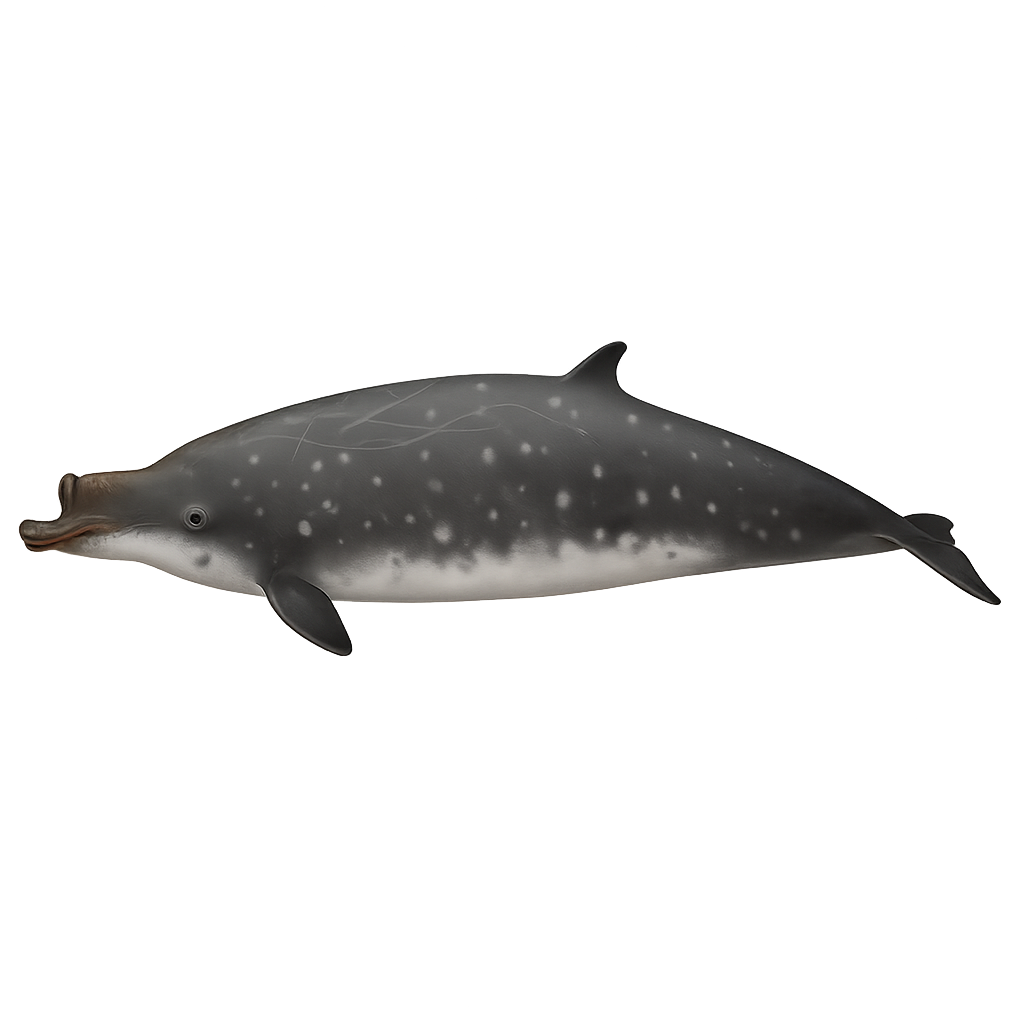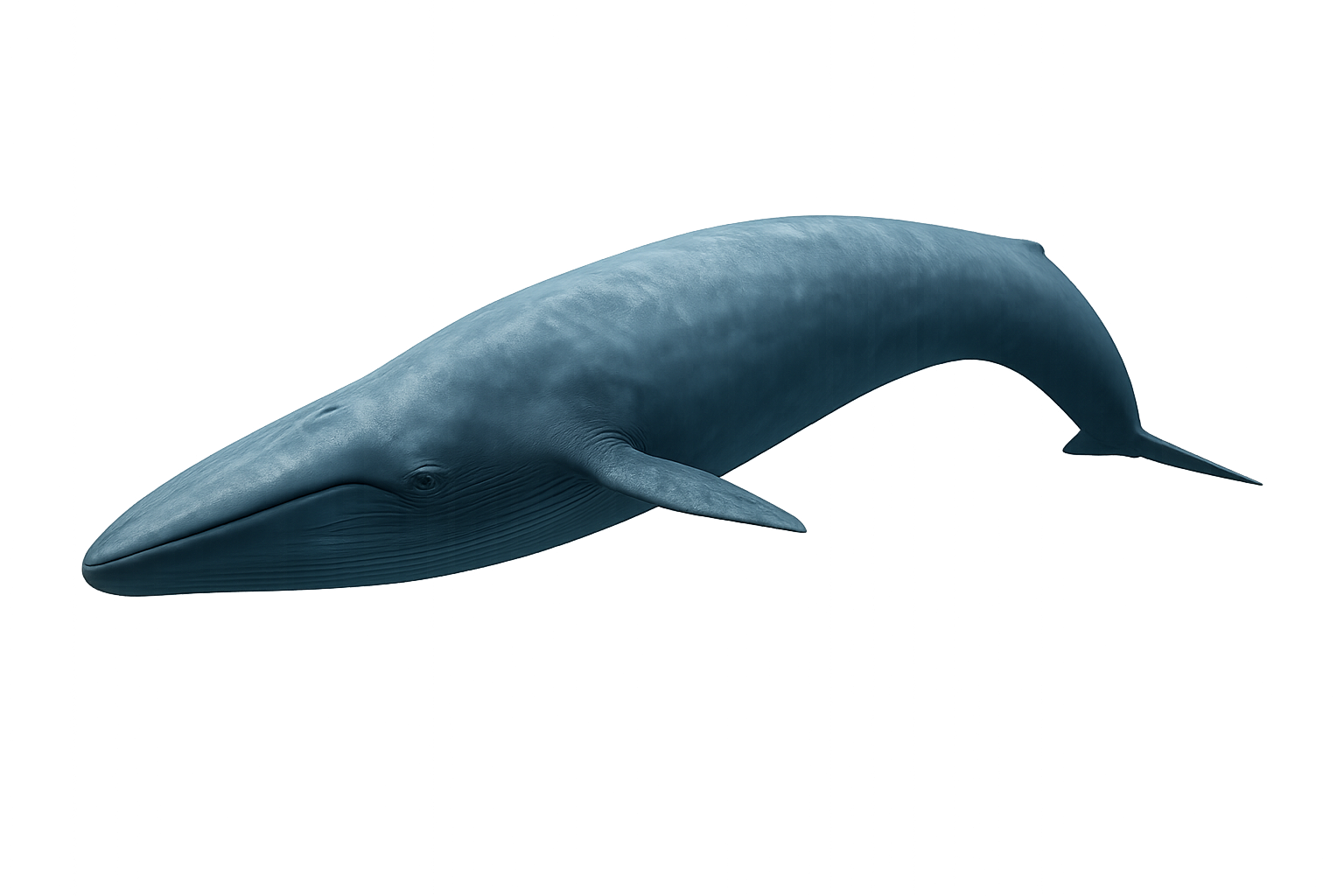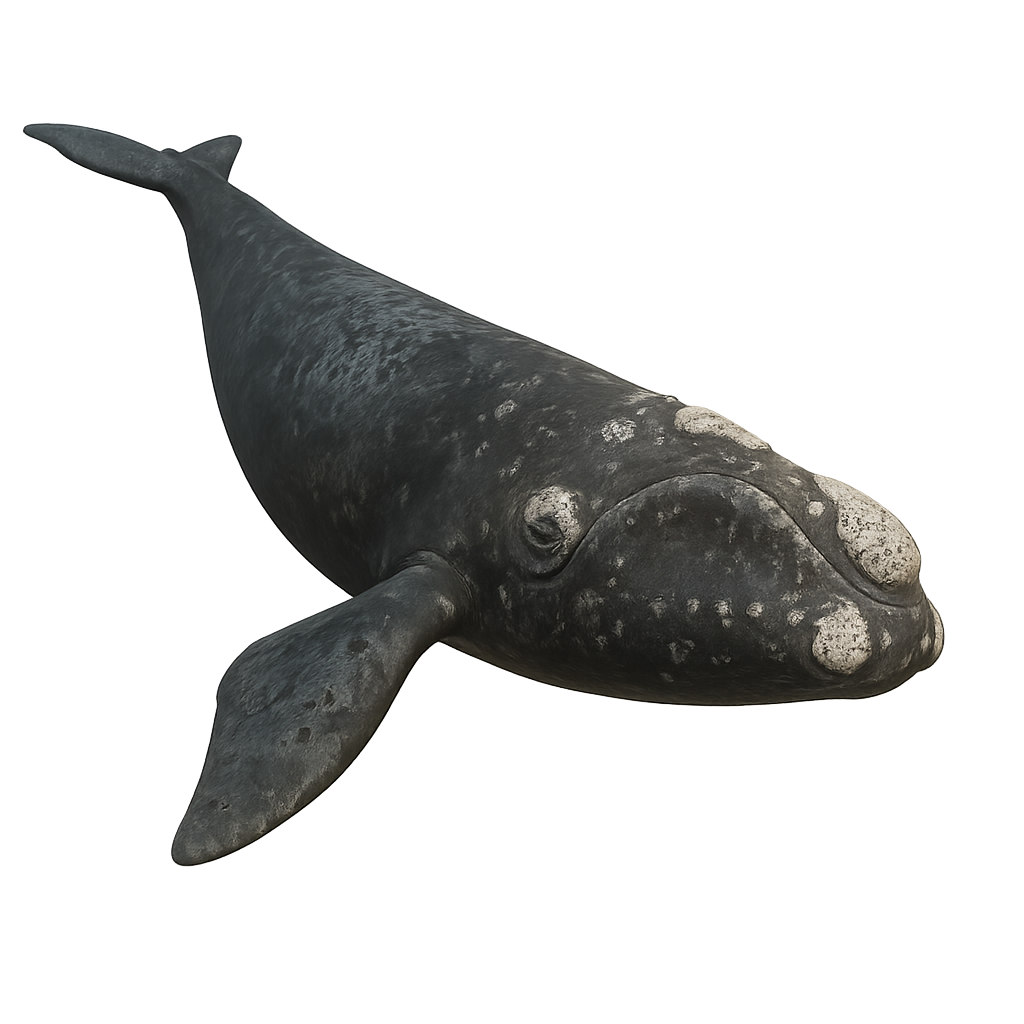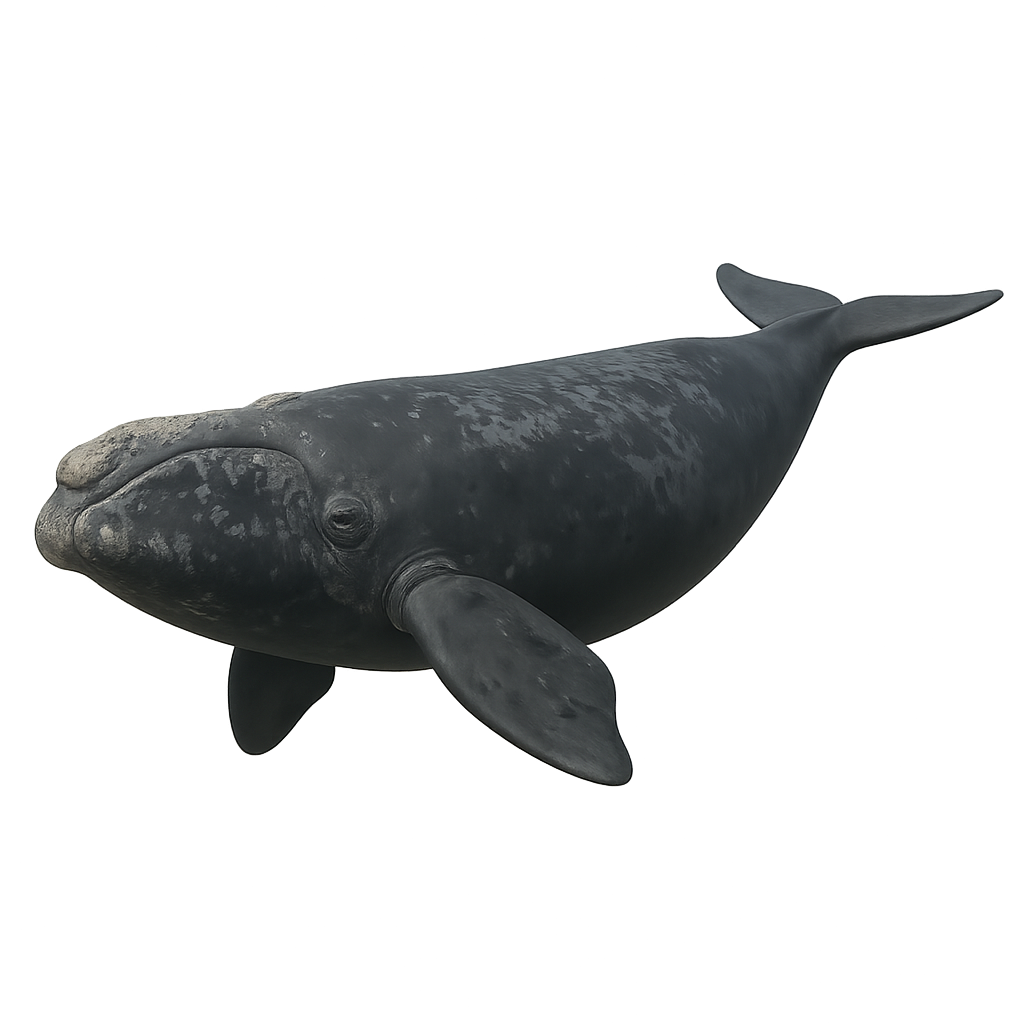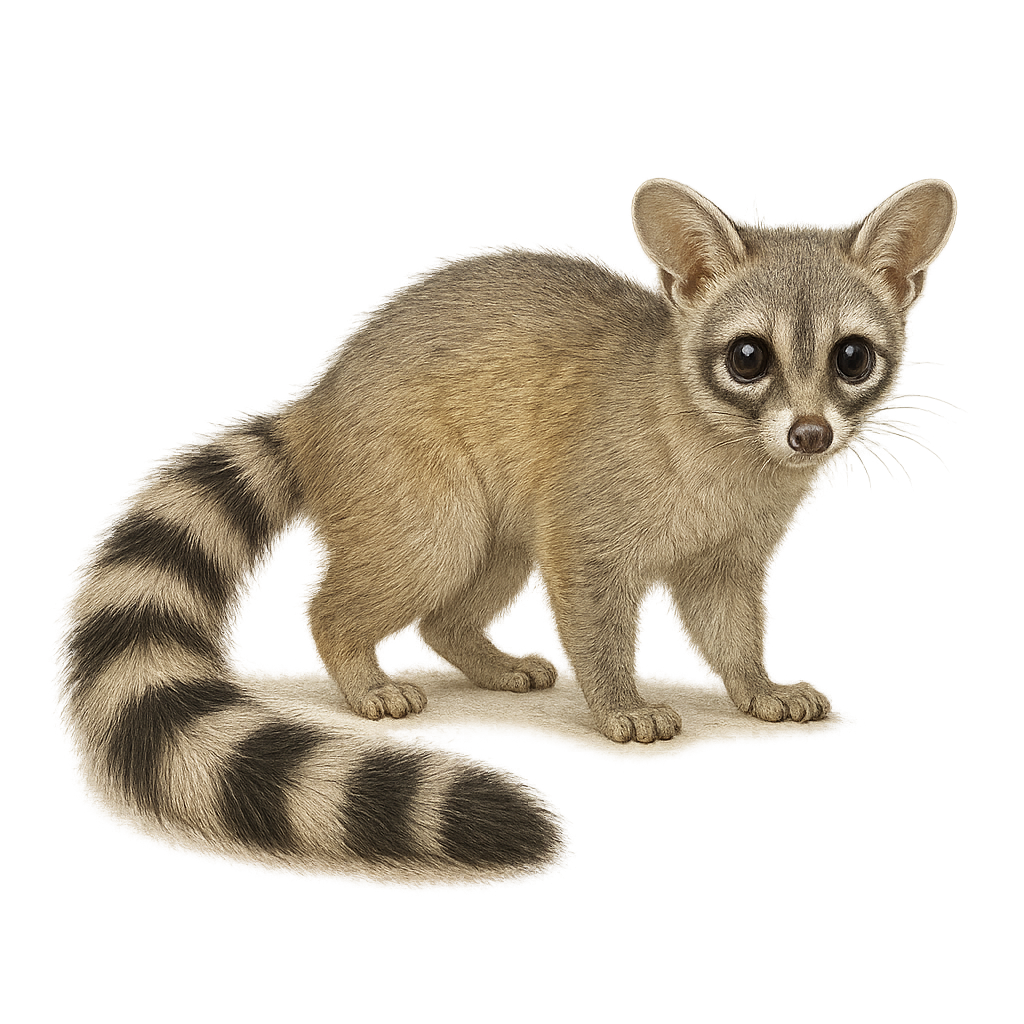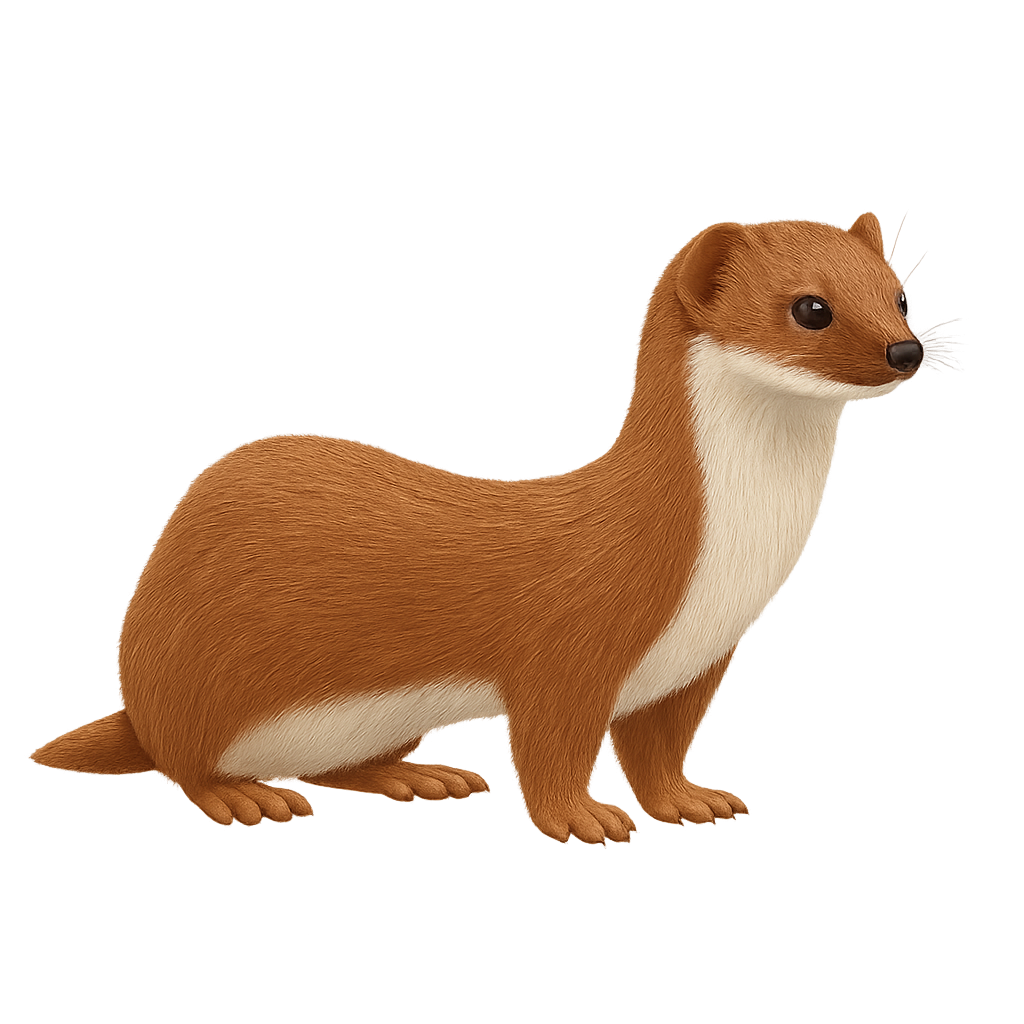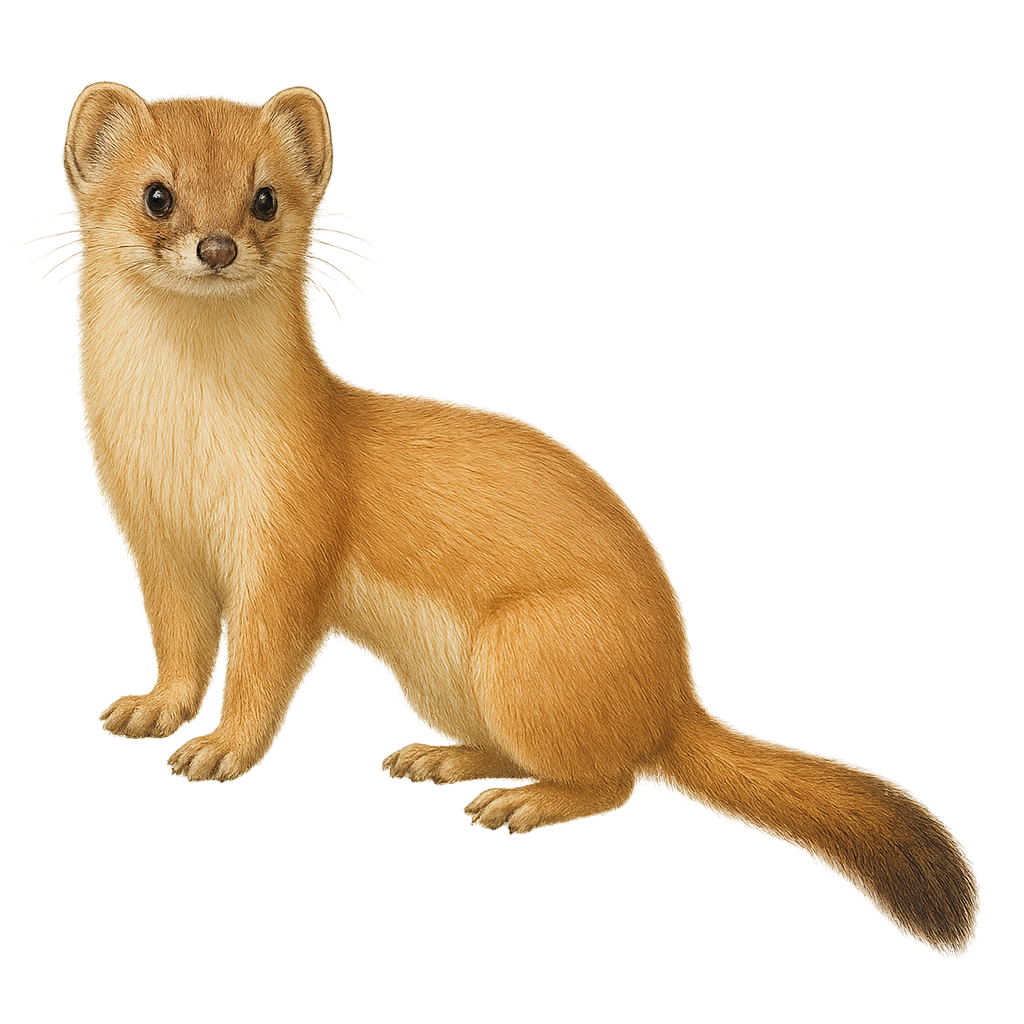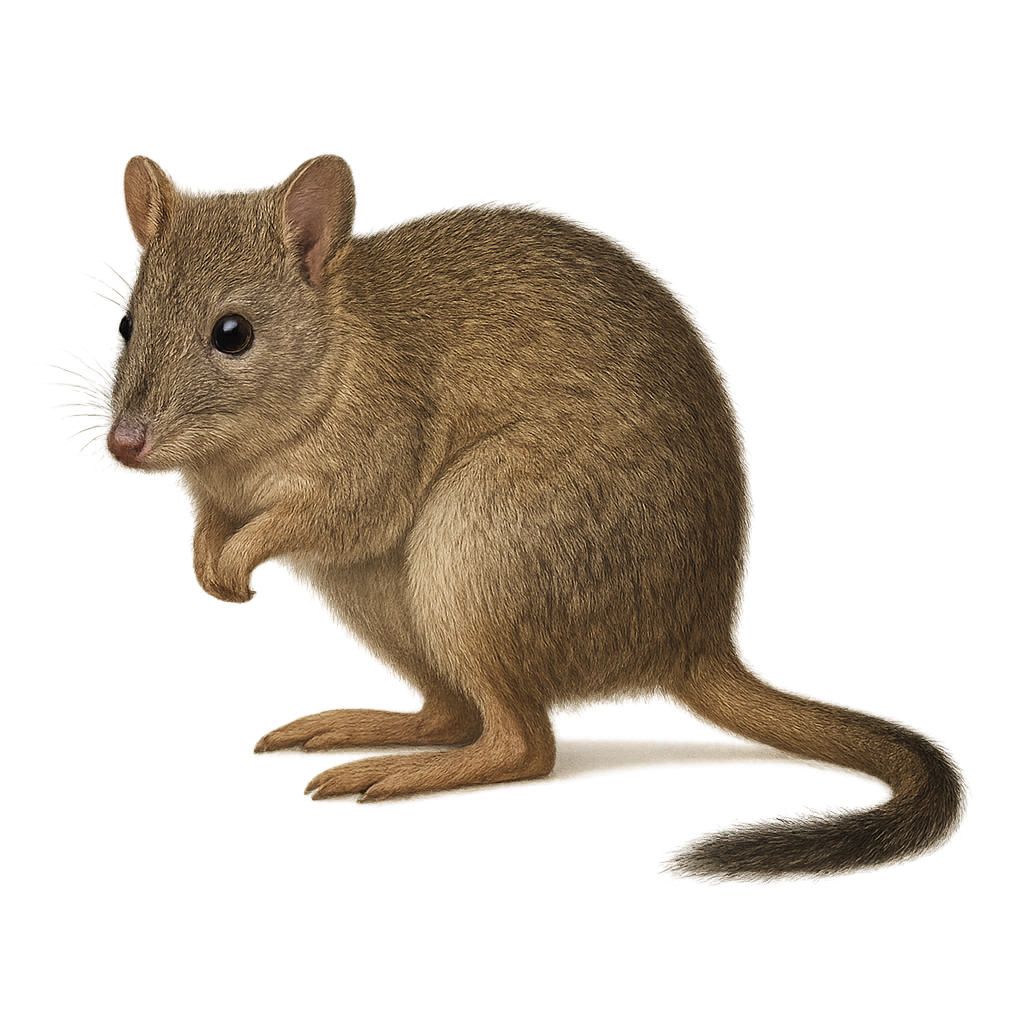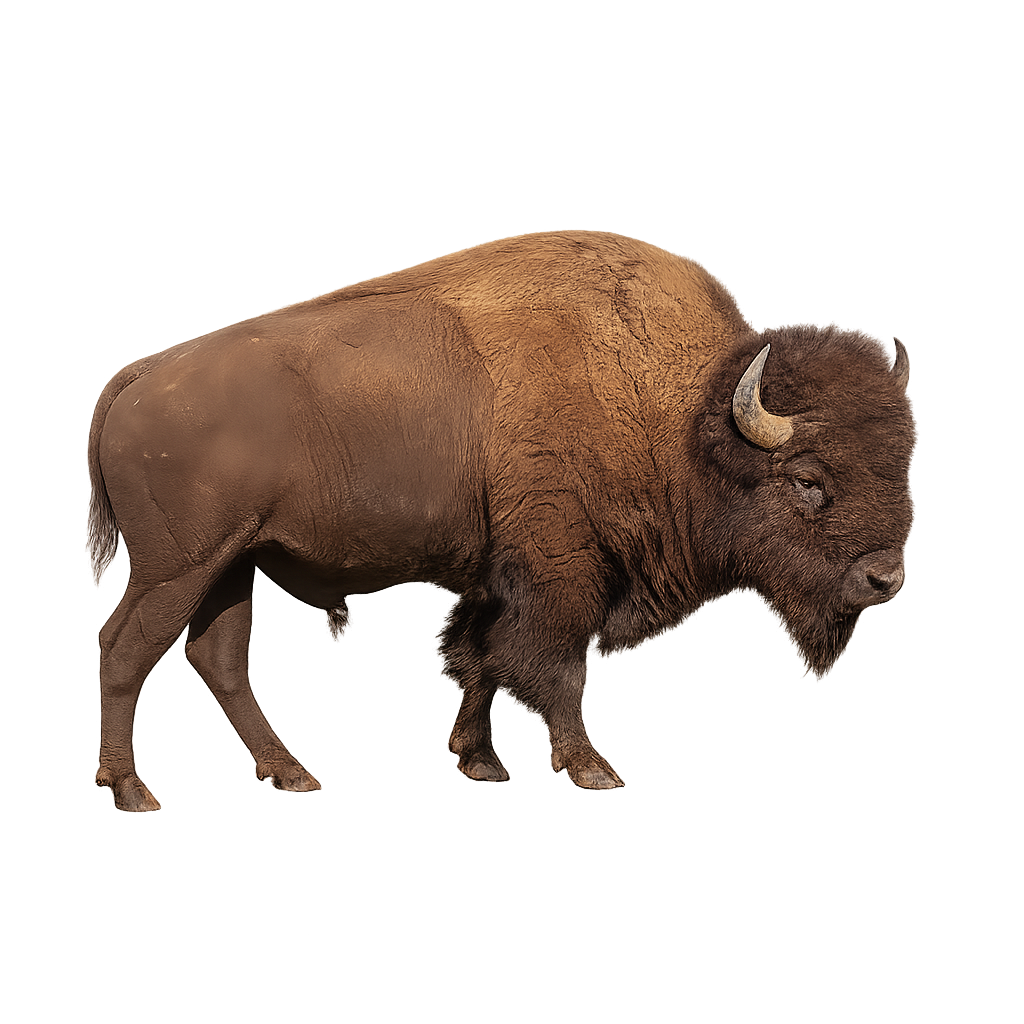The Addax, or white antelope, is a critically endangered species native to the Sahara Desert. Adapted to harsh desert conditions, it has a light-colored coat that reflects sunlight and broad hooves for walking on sand. Addaxes live in small herds and primarily feed on grasses and leaves. They can survive long periods without water. Unfortunately, overhunting and habitat loss have drastically reduced their numbers. Conservation efforts are underway to protect this iconic desert species.
The African Wild Ass, or Equus africanus, is a species of equid native to the arid and semi-arid regions of East and Northeast Africa. It is the wild ancestor of the domestic donkey. This mammal is well adapted to its harsh environment, capable of surviving with minimal water and food. It has a light grey coat with black stripes on its legs, reminiscent of a zebra. Its long, mobile ears allow it to detect predators from a distance. The African Wild Ass lives in small family groups and primarily feeds on grasses and shrubs. Unfortunately, it is critically endangered due to hunting and habitat loss.
The Blackbuck, or Antilope cervicapra, is a species of antelope native to the Indian subcontinent. It is easily identifiable by its spiral horns and contrasting coat: males have a striking black and white coloration, while females and juveniles are fawn-colored. These antelopes primarily inhabit grassy plains and open savannas, moving in herds. They are diurnal, spending most of the day grazing. Their diet mainly consists of grasses, but they also eat leaves and fruits. Blackbucks are known for their speed and agility, which help them evade predators.
The pronghorn is an ungulate 1.2–1.5 m long and 35–65 kg, with light brown and white striped fur and curved horns. It inhabits grasslands and arid steppes of North America, feeding on herbaceous plants and leaves. During the rut, males loaf near females and perform high-speed intimidation runs.
The sable antelope, or Hippotragus niger, is a majestic African herbivore, recognizable by its black coat in adult males and dark brown in females and juveniles. Both sexes have long, backward-curving horns. These animals live in herds, often led by a dominant female, and are primarily found in wooded savannas and open grasslands. Their diet mainly consists of grasses and foliage. Males are territorial and can be aggressive during the rutting season. The sable antelope is an iconic species of African wildlife, admired for its beauty and grace.
The roan antelope, Hippotragus equinus, is a large African herbivore known for its reddish-brown coat and long, ringed horns. It primarily inhabits the savannas and wooded grasslands of sub-Saharan Africa. Males are slightly larger than females, reaching up to 1.5 meters at the shoulder and weighing around 300 kg. Both sexes have horns that can grow up to a meter long. The roan antelope is a gregarious animal, living in small herds led by a dominant female. It is known for its wary nature and ability to vigorously defend its young from predators.
The four-horned antelope, or Tetracerus quadricornis, is a unique small ruminant, primarily due to its distinctive four horns. Native to the Indian subcontinent, this species prefers dry forests and scrublands where it can blend into the landscape to escape predators. It stands about 55 to 64 cm at the shoulder and weighs between 17 and 22 kg. Its coat ranges from light to dark brown, with a lighter belly. Males sport two pairs of horns, the longest reaching up to 12 cm. The four-horned antelope is a solitary animal, except during the breeding season. It is primarily herbivorous, feeding on leaves, fruits, and young shoots.
The Argali is the largest wild sheep in the world, known for its imposing size and majestic spiral horns. It primarily inhabits the mountains of Central Asia, where it frequents the arid and semi-arid regions of steppes and high plateaus. This large ungulate is perfectly adapted to mountainous environments, moving nimbly on steep terrain at high altitudes. The Argali is a herbivore, feeding on grasses and woody plants.
The Argali is also a symbol of strength and resilience, but it is threatened by habitat loss and overhunting. Conservation efforts are underway to protect this iconic species and preserve its natural habitat.
Aye-aye
Daubentonia madagascariensis
The Aye-aye is a nocturnal lemur endemic to Madagascar, known for its strange appearance, notably its extremely long and thin middle finger which it uses to extract insects and larvae from tree trunks. It is a shy and secretive animal, primarily living in the tropical forests of the island. Due to its unique feeding method, it is sometimes viewed as an omen of misfortune by local populations, though its ecological role in maintaining forest balance is crucial. The Aye-aye is listed as vulnerable due to deforestation and cultural beliefs surrounding it.
The olive baboon, or Papio anubis, is a robust and adaptable primate widely distributed in sub-Saharan Africa. It is characterized by its olive-green coat, powerful limbs, and elongated snout. Males are significantly larger than females, weighing up to 30 kg. These baboons live in complex social groups of up to 150 individuals, where hierarchy is crucial. As opportunistic omnivores, they feed on fruits, seeds, insects, and small animals. Their habitat ranges from savannas to tropical forests, demonstrating great adaptability. Although their status is currently "least concern," deforestation and hunting pose potential threats.
The chacma baboon, Papio ursinus, is a primate from the Cercopithecidae family, widely found in southern Africa. It is recognizable by its gray-brown fur and dark face, often surrounded by a lighter mane in males. Chacma baboons live in complex social groups that can number up to 100 individuals. They are omnivorous, feeding on fruits, seeds, insects, and small vertebrates. Their habitat ranges from savannas to open forests and rocky areas. Known for their intelligence, they can adapt to various environments, including urban areas. Although sometimes considered pests, they play a crucial role in their ecosystem.
The Guinea baboon, Papio papio, is a medium-sized primate belonging to the Cercopithecidae family. It is primarily found in West Africa, particularly in Guinea, Senegal, and Gambia. This baboon is distinguished by its reddish-brown fur and black face. Males are generally larger than females and have a more developed mane. They live in complex social groups, often consisting of several dozen individuals. These primates are omnivorous, feeding on fruits, seeds, insects, and small animals. The Guinea baboon plays an important role in its ecosystem, particularly in seed dispersal.
The yellow baboon, Papio cynocephalus, is a medium-sized primate known for its yellow-brown coat and elongated face. It primarily inhabits the savannas and open woodlands of East Africa. Yellow baboons are social animals, living in groups that can number up to 200 individuals. They have a complex social structure with well-established hierarchies. Omnivorous, they feed on fruits, seeds, insects, and small vertebrates. Their behavior is marked by great adaptability, allowing them to thrive in various environments. Yellow baboons play a crucial role in their ecosystem, particularly in seed dispersal.
The Baiji, or Yangtze River dolphin, was a freshwater dolphin species once endemic to the Yangtze River in China. Recognizable by its streamlined body and flag-like dorsal fin, the Baiji typically measured between 2 and 2.5 meters in length. Its skin was a pale gray, almost white, earning it the nickname "white dolphin of China." Unfortunately, due to pollution, overfishing, and dam construction, the Baiji is now considered extinct in the wild. Conservation efforts failed to reverse its rapid population decline, making it a symbol of the fragility of freshwater ecosystems.
Blainville's beaked whale is a little-known species of beaked whale, primarily inhabiting the deep waters of the Atlantic and Pacific Oceans. It is easily recognized by its long, narrow rostrum. This species is difficult to observe due to its deep-ocean habitat and migratory habits. The Blainville's beaked whale is still poorly studied but is threatened by pollution, ship collisions, and underwater noise.
Cuvier's beaked whale, also known as the Cuvier's whale, is a deep-diving cetacean found primarily in tropical and temperate oceans worldwide. It is easily recognized by its elongated head and prominent beak. This cetacean is one of the deepest diving whales, capable of descending more than 2000 meters in search of food. Its diet primarily consists of squid and deep-sea fish. Although it is a difficult animal to observe due to its deep habitat, it is sometimes seen at the surface to breathe. Cuvier's beaked whale is known for its long dives and mysterious behaviors.
The Humpback Whale is one of the most iconic whale species, known for its spectacular jumps and fascinating songs. This massive whale can grow up to 16 meters long and weigh up to 36 tons. It is found in oceans worldwide, migrating between the cold waters of the Arctic and the warmer tropical waters to breed. Humpback whales primarily feed on krill and small fish, which they capture using a group hunting technique known as "bubble netting," where they create bubbles underwater to trap their prey.
In addition to their impressive hunting behaviors, Humpback Whales are also famous for their complex songs, which males use to attract females during the breeding season.
The Blue Whale is the largest animal ever known to have existed on Earth. This impressive cetacean can grow up to 30 meters long and weigh as much as 180 tons. Its gray-blue skin and streamlined body are perfectly adapted to ocean life, and despite its enormous size, the Blue Whale primarily feeds on small marine organisms such as krill, which it consumes in large quantities. Using its massive tongue and enormous mouth, it can swallow up to 4 tons of krill in a single gulp.
Unfortunately, although once abundant, the Blue Whale is now classified as an endangered species due to commercial whaling, which has significantly reduced its population. Conservation efforts are now in place to protect this majestic creature.
Omura’s whale is a small baleen whale measuring 8–12 m in length, with a slender grey body and a slightly asymmetrical head. It inhabits shallow tropical and subtropical waters, feeding mainly on small crustaceans and fish by filtering water through its baleen plates. Usually seen alone or in small groups near the surface.
The Greenland whale is one of the largest baleen whales, with a size that can reach 16 to 18 meters. It lives in the icy waters of the Arctic and primarily feeds on krill and small fish, filtering them through its baleen plates. It is a long-lived animal, with a lifespan that can exceed 200 years. While protected, it is threatened by climate change, pollution, and ship collisions.
The southern right whale is a large baleen whale in the family Balaenidae, measuring 13–18 m in length and weighing up to 80 tonnes. Its robust body lacks a dorsal fin and is covered with white callosities on the head. It inhabits temperate coastal waters of the Southern Hemisphere and feeds on zooplankton by slow-swimming filter feeding. During the breeding season, females give birth to and nurse calves in sheltered bays.
The North Atlantic right whale is a large baleen whale, recognized for its imposing size and rough black skin. This cetacean, once hunted for its oil, is now protected and classified as critically endangered. It primarily lives in the coastal waters of the North Atlantic, from New England to Eastern Canada. Feeding on plankton and krill, it uses its baleen plates to filter food. Due to pollution, underwater noise, and ship collisions, the species remains severely threatened.
The Rucervus duvaucelii, commonly known as the barasingha or swamp deer, is a deer species native to the Indian subcontinent. It is recognizable by its impressive antlers, which can have up to twelve tines, hence its local name meaning "twelve-tined". This deer prefers wet and marshy areas, where it primarily feeds on aquatic grasses. Males are generally larger than females and have a golden-brown coat. The barasingha is a social species, living in herds that can number several dozen individuals. Unfortunately, it is threatened by habitat loss and illegal hunting, leading to a significant decline in its wild populations.
The Bassariscus astutus, commonly known as the ringtail, is a small carnivorous mammal native to North America. It is recognizable by its long, ringed tail and gray-brown fur. This small predator is highly agile and adaptable, allowing it to thrive in various habitats, from forests to urban areas. Primarily nocturnal, it feeds on a variety of foods, including fruits, insects, and small vertebrates. Although solitary, it can sometimes be seen in small family groups. Its ability to climb and squeeze into tight spaces makes it a fascinating animal to observe.
The European Weasel is the smallest carnivore in Europe, easily recognizable by its tiny size and brown coat with a white throat and belly. It primarily inhabits a variety of environments such as forests, meadows, and agricultural areas, where it hunts small mammals, birds, insects, and eggs. Agile and fast, the European Weasel is a stealthy hunter, capable of slipping into tight spaces to capture its prey.
Solitary and territorial, the European Weasel is active both day and night, and it uses its own burrows or those of other animals to hide and rest. Though small, it is a formidable predator, often seen as beneficial for regulating small rodent populations. However, it can be threatened by habitat destruction and changes in agricultural practices.
The mountain weasel, Mustela altaica, is a small mustelid native to the mountainous regions of Central Asia. It is characterized by its dense, silky fur, typically light to dark brown, with a lighter underside. Its body length ranges from 22 to 29 cm, with a tail measuring about 12 to 15 cm. Adapted to cold environments, it is often found in alpine meadows, coniferous forests, and rocky areas. As a carnivore, it primarily feeds on small mammals, birds, and insects. Although elusive, it plays a crucial role in controlling rodent populations.
The Beluga is a remarkable cetacean, easily recognizable by its immaculate white color and streamlined shape. Unlike many other dolphins, the Beluga has a rounded forehead, called a "melon," which allows it great head flexibility. What also makes the Beluga unique is its ability to produce a wide variety of sounds, which it uses to communicate and navigate in the cold waters of the Arctic seas, the North Atlantic, and rivers. It primarily feeds on fish, crustaceans, and mollusks, hunting them with its excellent echolocation ability.
Belugas live in social groups called "pods" and are known for their social behavior and interaction with humans. Despite its popularity, the Beluga is vulnerable to water pollution and climate change, which affect its natural habitats.
The woylie, or Bettongia penicillata, is a small Australian marsupial known for its distinctive brush-tailed appearance. This nocturnal creature inhabits open forests and woodlands, playing a crucial ecological role by dispersing fungal spores. Measuring about 30 to 38 cm in length, with a tail of 29 to 36 cm, it weighs between 1.1 and 1.6 kg. Its fur is grey-brown with a lighter underside. Once widespread, its habitat has diminished due to predation by foxes and cats, as well as habitat loss. Conservation efforts are underway to protect this vulnerable species, including the establishment of reserves and captive breeding programs.
The binturong is an arboreal mammal with a stocky body and long prehensile tail. Its shaggy black fur and unique scent reminiscent of popcorn make it easily identifiable. Active at night, it moves slowly through the canopy of Southeast Asian rainforests in search of fruits, small animals, and eggs. Solitary and elusive, it is increasingly rare due to habitat loss.
The American Bison is one of the largest land mammals in North America, recognizable by its massive head, thick fur, particularly on its back. Once widespread, it nearly went extinct in the 19th century due to overhunting and habitat loss. Today, thanks to conservation efforts, the population of American Bison is growing, though the species remains protected in many areas.
The American Bison lives in herds, primarily in grasslands and plains. Herbivorous, it feeds on grasses, woody plants, and some vegetation. As it moves, it creates powerful tracks in the plains. This social mammal is also known for its territorial behavior, with males fighting for dominance within the group.


